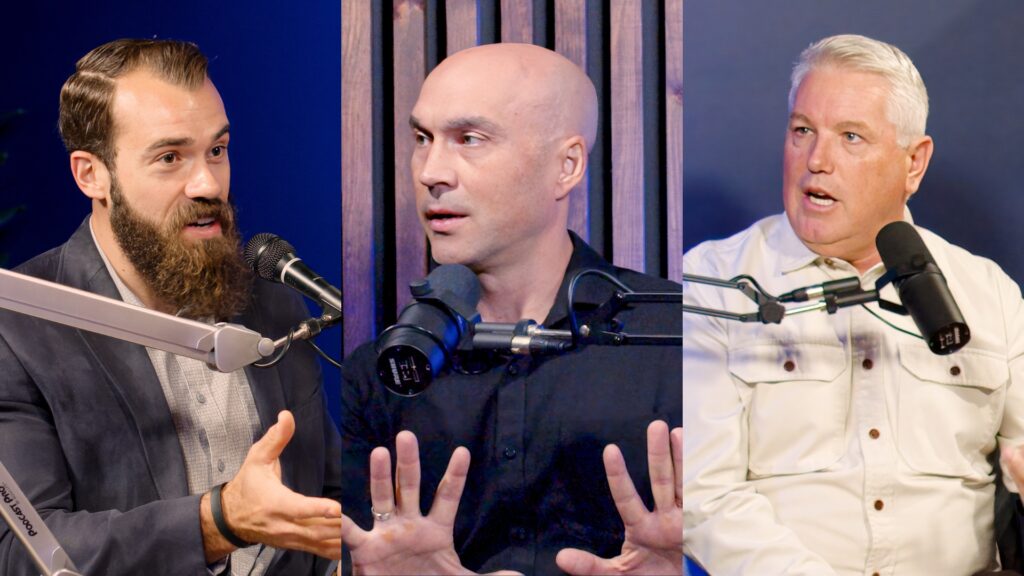Why not “Jesus-mas” or “God-mas”? For that matter, why do we use words like Christ-ian, Christ-ianity, Christ-endom? What is significant about “Christ”?
The very first verse of the New Testament contains several key names for its primary character. Matthew’s Christmas narrative opens by introducing Jesus Christ as the Son of David and the Son of Abraham (Matthew 1:1). I recently gave a message dealing with the relevance of the titles “Son of David” and “Son of Abraham” (those interested can view or listen to it elsewhere). This article will examine the significance of the title “Christ” as it is used in Matthew’s Gospel and why it matters for missions.
What does it mean to be “the Christ”?
To quote from Don Carson’s commentary on Matthew, “‘Christ’ is roughly the Greek equivalent to ‘Messiah’ or ‘Anointed’” (61). Peter Gentry teaches that in the Old Testament, “The verb ‘to anoint’ is normally used of consecrating persons for offices” (Kingdom Through Covenant, 553). For example:
- Priests were anointed for special functions as they served in the tabernacle/temple (Leviticus 4:3; 6:22).
- The patriarchs are said to be like anointed prophets (Psalm 105:15).
- Most prominently, kings were anointed before being publicly recognized as rulers (1 Samuel 2:35; 16:13; 24:10; 2 Sam 19:21; Lam 4:20).
What would this mean for the first readers of Matthew’s Gospel as they notice that Jesus is called “Christ”? Carson observes, “With the rising number of OT prophecies concerning King David’s line (e.g., 2 Samuel 7:12-16; cf. Psalm 2:2; 105:15), ‘Messiah,’ or ‘Christ,’ became the designation of a figure representing the people of God and bringing in the promised eschatological reign.” One of those prophecies is given in the form of a vision recorded by Daniel.
“I saw in the night visions, and behold, with the clouds of heaven there came one like a son of man, and he came to the Ancient of Days, and was presented before him. And to him was given dominion and glory and a kingdom, that all peoples, nations, and languages should serve him; his dominion is an everlasting dominion, which shall not pass away, and his kingdom one that shall not be destroyed.” (Daniel 7:13-14)
Daniel apparently envisions an anointed king ruling eternally over all the nations. His description (and others like it throughout the OT) set the stage for the heightened expectations that Matthew’s original audience no doubt possessed and expressed. They would have then looked for clues throughout the rest of Matthew’s narrative to see how Matthew would support his claim that Jesus is the Christ.
How does Matthew show Jesus to be the Christ?
- The Christ is the Son of David. Carson comments on 1:1, “Matthew’s linking of ‘Christ’ and ‘son of David’ leaves no doubt of what he is claiming for Jesus.” He also observes that the gospel writers use “Christ” as a title more than as a name, and that its use as a name became more commonplace among believers after the resurrection. Matthew shows that Jesus himself links the “Christ” and the “Son of David” in a conversation with the Jewish religious leaders (22:41-45). Matthew demonstrates that Jesus is the Christ who is the Son of David, that is, one in line to be king.
- The Christ is the King of the Jews. Matthew first makes this connection in chapter 2 when he shows that the wise men from the east came to seek the “king of the Jews” (Matthew 2:2). Upon hearing this, Herod inquired of those in his court “where the Christ was to be born” (2:4). Apparently then, even Herod understood that the Christ was connected to the throne in Jerusalem. The connection is made again in Matthew 27, where Pilate twice refers to “Jesus who is called Christ” (27:17, 22). This occurs in the same context where Pilate asks Jesus if he is “the King of the Jews” (27:11), which Jesus affirms. Shortly after, others mockingly direct the titles of “King of the Jews” (27:29, 37) and “King of Israel” (27:42) to Jesus. Matthew demonstrates, both at Jesus’ birth and at Jesus’ death (and both from the mouths of Roman governing officials) that Jesus is the Christ who is the King of the Jews.
- The Christ is one who comes in the name of the Lord. While in prison, John the Baptist heard about “the Christ” and his deeds and sent messengers to ask Jesus, “Are you the one who is to come, or shall we look for another?” (Matthew 11:2-3). John is alluding to Malachi 3:1-2, which speak of the Lord who “will suddenly come to his temple” and the “messenger of the covenant” who “is coming,” whose “coming” no one can endure. Additionally, John would have in mind Psalm 118:26 about the blessed one “who comes in the name of the LORD.” Thus, Matthew shows that John recognizes that the one who comes in the name of the Lord, indeed Malachi’s coming one, is the Christ.
- The Christ is the Son of Man and the Son of God. Jesus famously asked his disciples, “Who do people say that the Son of Man is?” (Matthew 16:13). When he turned the question to them directly Peter responded, “You are the Christ, the Son of the living God” (16:16). Jesus went on to warn his followers “to tell no one that he was the Christ” (16:20). The significance is that all those titles—Son of Man, Christ, and Son of God—are all interconnected. Matthew tells of a similar connection at the trial of Jesus when the high priest demanded him to “tell us if you are the Christ, the Son of God” (26:63; notice that even the high priest recognized that these titles refer to the same person). Jesus answered affirmatively and explained further that they would “see the Son of Man seated at the right hand of Power and coming on the clouds of heaven” (26:64), a clear indication that Jesus is self-identifying as the one spoken of in Daniel 7:13-14. He speaks similarly in his eschatological discourse when he distinguishes between false Christs (24:5, 23-24) and the Son of Man who comes “on the clouds of heaven with power and great glory” (24:30). Through all these conversations, Matthew illustrates that the Christ is the Son of Man and the Son of God.
- The Christ is the true teacher of God’s instructions. Jesus emphasized to his followers that they “have one Father, who is in heaven” (Matthew 23:9) and “one instructor, the Christ” (23:10). That instructor is the same as the rabbi who is the “one teacher” mentioned in 23:8. “Instructor” calls to mind the teaching roles held by both the priests and the prophets in the OT. Here, Matthew shows Jesus equating the term “Christ” not with kingship (as in other places), but with priesthood and prophetic ministry, that is, with each of the “anointed” roles mentioned above.
Why does this matter for missions?
Matthew’s Gospel begins with Jesus being called “Christ” and ends with Jesus claiming, “All authority in heaven and on earth has been given to me” (28:18). This claim also has its basis in Daniel 7:13-14, where “one like a son of man…was given dominion and glory and a kingdom, that all peoples, nations, and languages should serve him.” Jesus is then able to command his followers to “make disciples of all nations” (Matthew 28:19).
Jesus’ role as “Christ” means that there is indeed hope that Jesus reigns and that the promised eschaton is coming. The one whose birth we rightfully celebrate now is the one with dominion over all peoples, whose coming we longingly anticipate. Let us then obey his commission, until the day comes when, to play on the words of C. S. Lewis, it will be always Christmas and never winter.
Editor’s Note: This article was originally published December 24, 2020.





